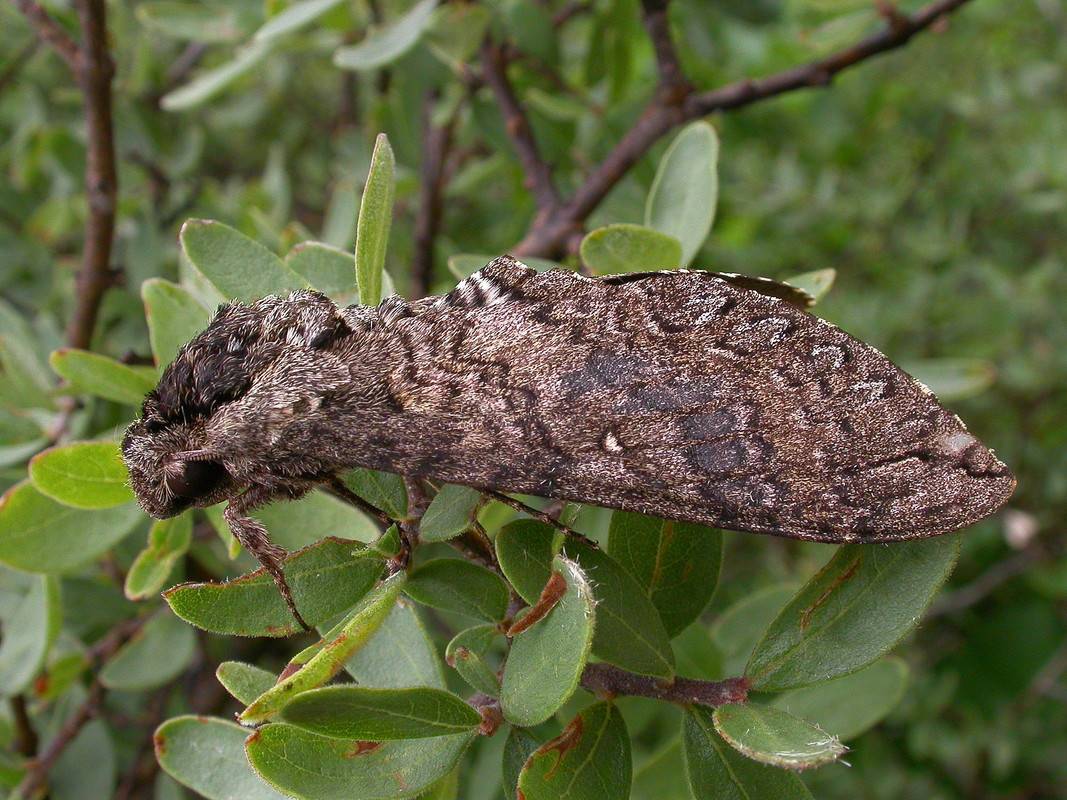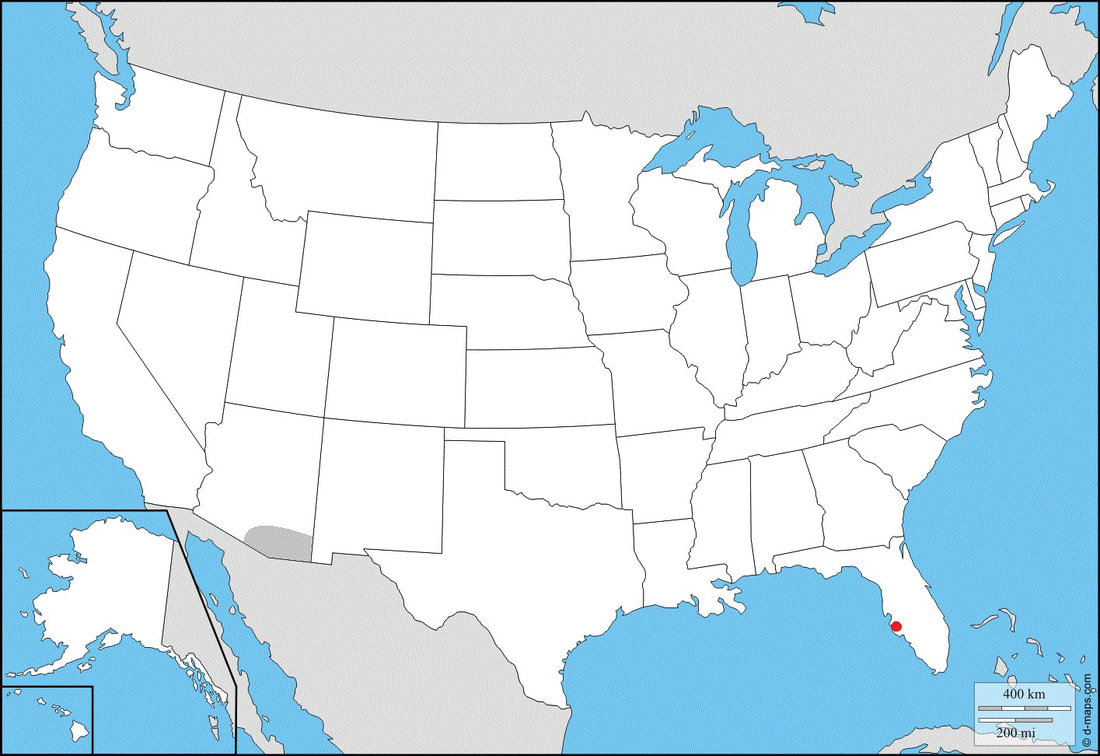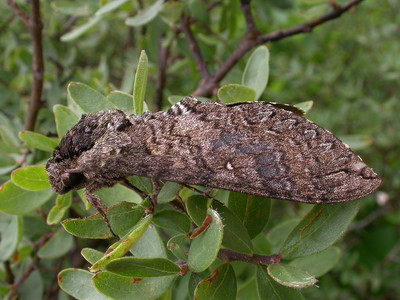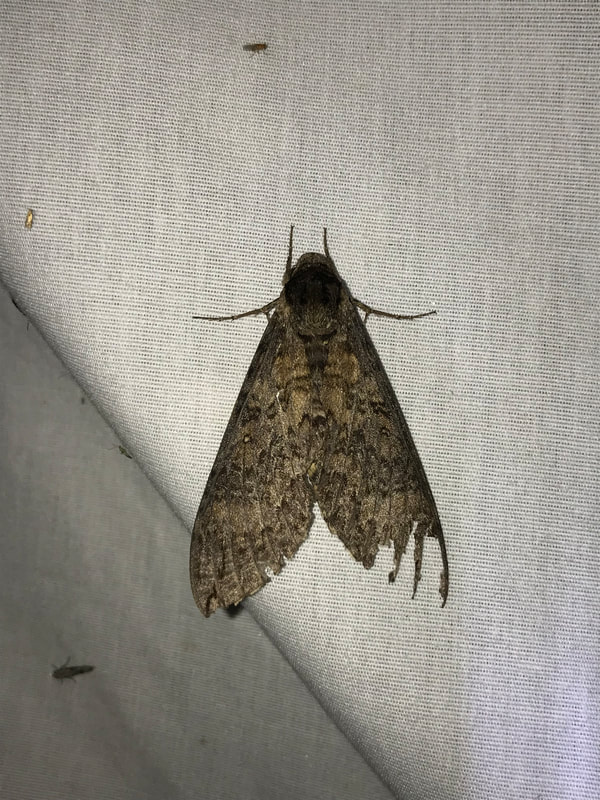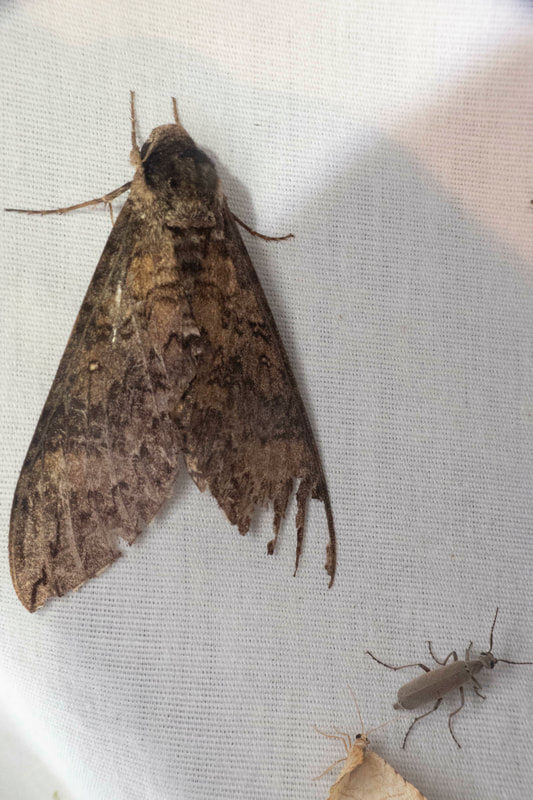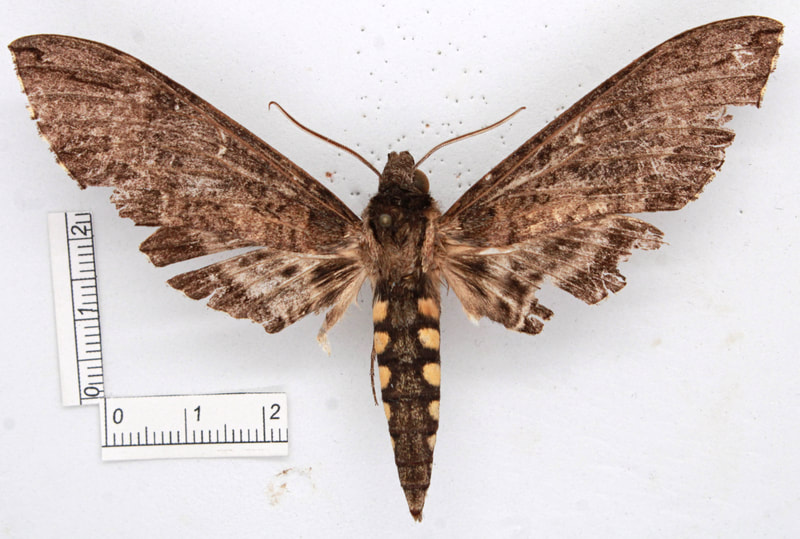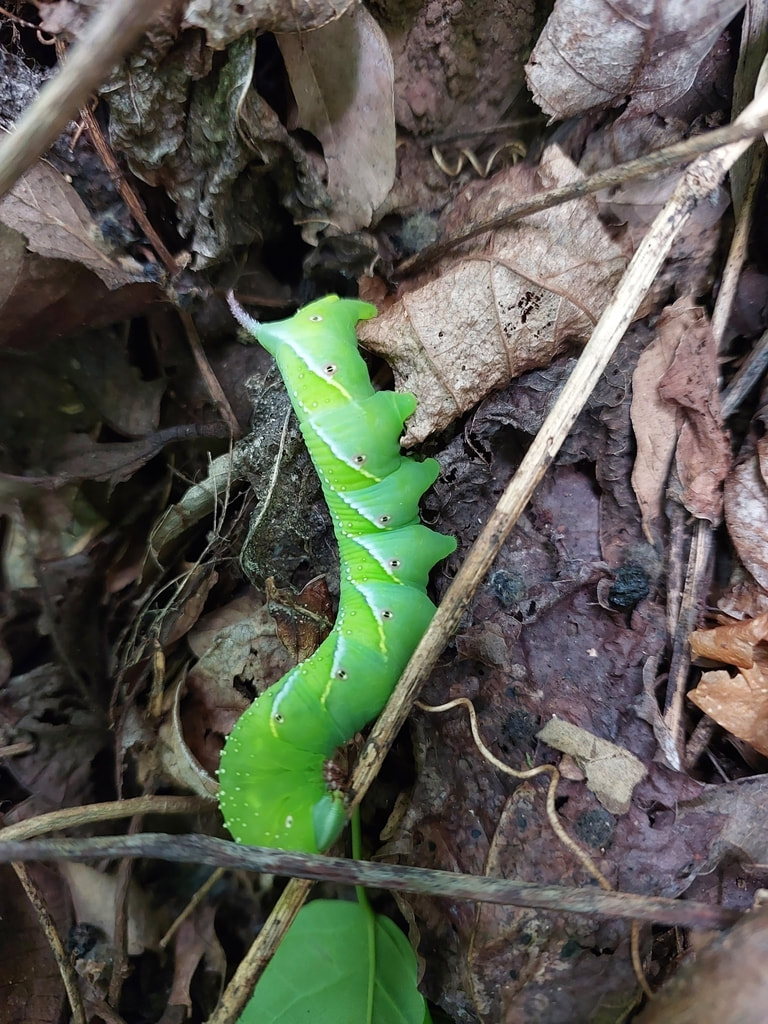|
Common Name(s): Occult Sphinx
Ecology: Adult description: This moth is very similar in appearance to Manduca sexta. So much so, that it is thought lots of records of this moth are overlooked as Manduca sexta at light and thus biases reporting for this species (2). The forewings of the two species are quite similar. Tuttle notes that Manduca occulta is overall smaller and less robust, and also has browner forewings than Manduca sexta (2). One separation factor for this species from Manduca sexta is the forewing fringe. In this species, there is almost an equal amount of black and white checkering in the forewing fringe. In Manduca sexta this is a very uneven amount and is less distinctly patterned. Another is the color of the wing, Manduca occulta has a base color of dark brown, rather than the gray-brown of Manduca sexta. Lastly, Manduca occulta has significantly less white maculation on the wings than Manduca sexta. Larval description: L5: This larva is fairly typical of the Manduca genus. It has creamy yellow granules on it’s body, mostly on the first few thoracic segments behind the head. The horn is green with some green or black granules, and does appear rough. There are 7 diagonal white or cream lines running the length of the body on each side each bordered by a brown/black line. Tuttle notes that while the lines may vary from cream or white, the last line leading to the horn is always bright white. Host plants: Click here to load this Caspio Cloud Database
Cloud Database by Caspio |
The gallery to the left contains photos of Manduca occulta adults. If you have a photo that you would like to submit to us, please contact us.
The gallery to the right contains photos of Manduca occulta larval and pupal stages. If you have a photo that you would like to submit to us, please contact us.
The gallery to the right contains photos of Manduca occulta larval and pupal stages. If you have a photo that you would like to submit to us, please contact us.
